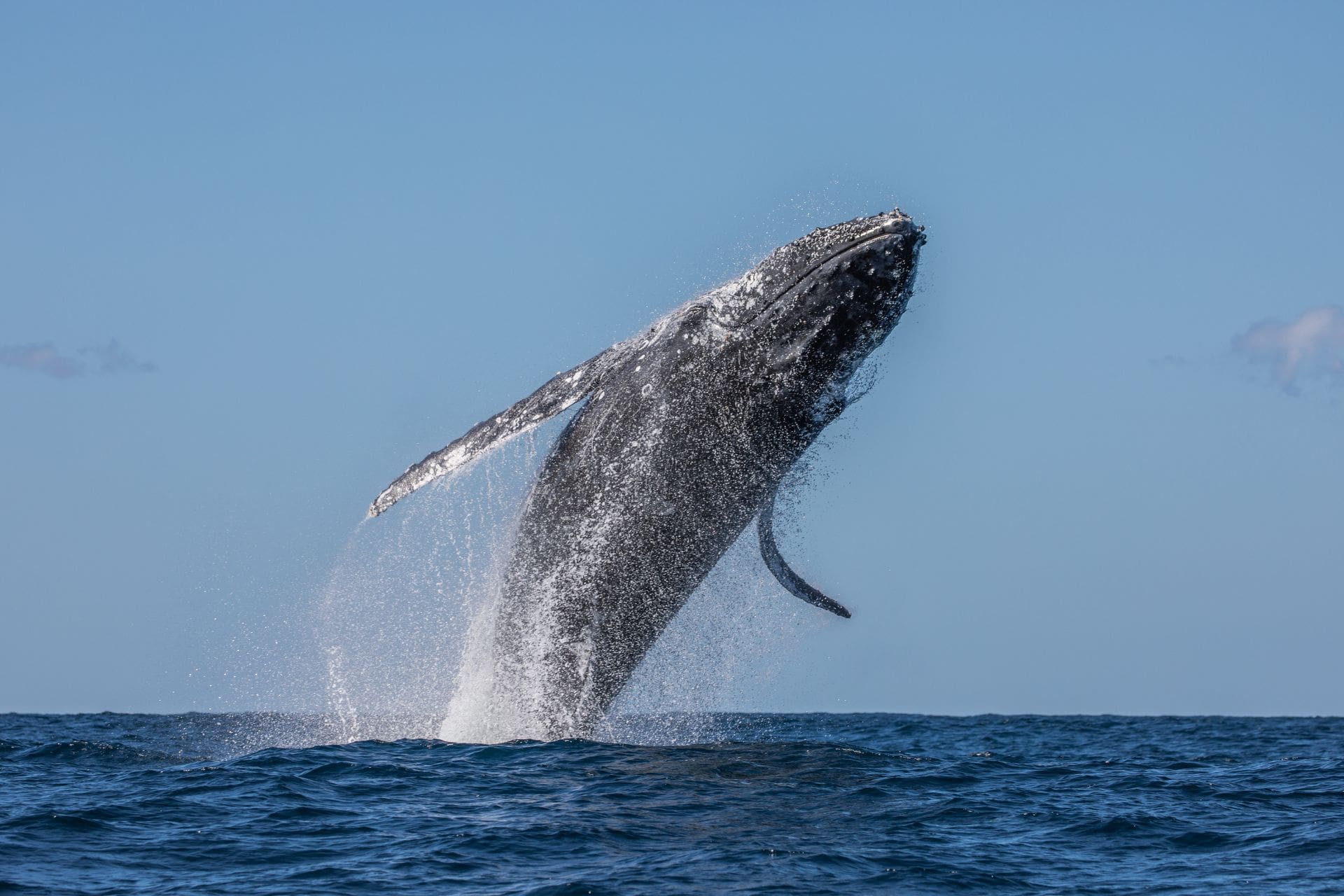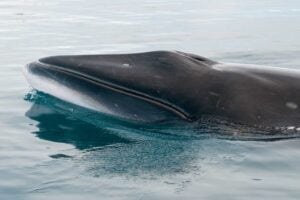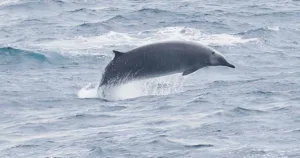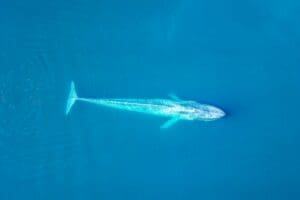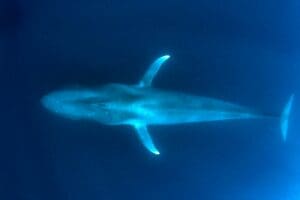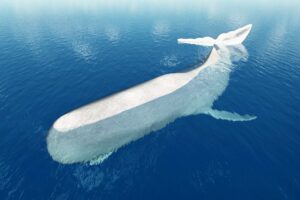Get to Know Humpback Whales: Shedding Light on the Enchanting Lives of these Giants
Whether you’re a seasoned whale watcher or planning your first adventure to the shores of Atlantic City, spotlight amazing marine mammals – humpback whales – and discover why they are a favorite among whale watchers worldwide.
Fascinating Insights into Humpback Whales
Are humpback whales friendly to humans?
Humpback whales are generally not aggressive and have been observed displaying curious behaviors around humans, such as approaching boats. However, they are wild animals, and interactions should always be approached with caution and respect for their space.
How many humpback whales are left?
As of the latest estimates, there are approximately 84,000 humpback whales worldwide. Their numbers have increased since the end of commercial whaling, a conservation success story.
What are 5 facts about humpback whales?


What is the biggest threat to humpback whales?
The biggest threats to humpback whales include entanglement in fishing gear, ship strikes, pollution, and the impacts of climate change on their habitat and food sources.
What happens if humpback whales go extinct?
The extinction of humpback whales would disrupt marine ecosystems, as they play a crucial role in the ocean’s ecological balance by affecting the distribution of their prey and helping to regulate the marine food web.
How long can a humpback whale hold its breath?
Humpback whales can hold their breath for up to 30 minutes, but typical dives last about 15 to 20 minutes.
What is the average lifespan of a humpback whale?
The average lifespan of a humpback whale is around 45 to 50 years, though some individuals may live up to 80 years or more.
Understanding Humpback Whales
What Makes Humpback Whales Unique
Have you ever seen a giant of the sea leap out of the water and splash back down with a huge wave? That’s a humpback whale showing off one of its most famous tricks: breaching! Humpback whales are like the acrobats of the ocean. They’re known for their incredible jumps and flips, which can be really exciting to watch.
But what do they look like? Humpback whales are huge – they can be as long as a school bus!
- Length: Adult humpback whales typically measure between 48 to 62 feet (14.6 to 18.9 meters) in length. Females are generally slightly larger than males.
- Weight: They can weigh anywhere from 25 to 40 tons (about 22,680 to 36,287 kilograms).
- Newborn Calves: At birth, humpback whale calves are already quite large, measuring about 10 to 15 feet (3 to 4.5 meters) in length and weighing approximately 1 ton (about 907 kilograms).
They have long, wing-like fins that can be up to a third of their body length. Imagine having arms that long! And if you get a close look, you’ll notice they have bumpy heads. These bumps are hair follicles, like the pores where your hair grows.
Where to see a humpback whale
Humpback whales can be found in oceans and seas around the world, and there are several key locations where they are commonly sighted, especially during their migration seasons. Here are some of the main locations where you can see humpback whales:
- Alaska, USA: In areas like Juneau and Glacier Bay, humpback whales are often seen feeding during the summer months.
- Hawaii, USA: The warm waters around the Hawaiian Islands are a popular breeding ground for humpback whales, especially from December to May.
- East Coast of the USA: Places like Cape Cod, Massachusetts, and the waters off Maine are known for humpback whale sightings, particularly in the summer and fall.
- West Coast of the USA: The Pacific Coast, from California up to Washington, offers opportunities to see humpback whales, especially from April to December.
- Queensland, Australia: The east coast of Australia, particularly along the Great Barrier Reef and Hervey Bay, is a prime spot for whale watching from July to November.
- Iceland: The waters around Iceland are great places to see humpback whales, particularly during summer.
- Norway: In areas like Tromsø, humpback whales can be seen during the winter months, especially when they come to feed on herring.
- Baja California, Mexico: The warm waters here are breeding grounds for humpback whales from December to April.
- Dominican Republic: The Silver Bank and Samaná Bay are famous for humpback whale breeding and calving from January to March.
- South Pacific Islands: Places like Tonga and the Cook Islands are known for their humpback whale populations from July to October.
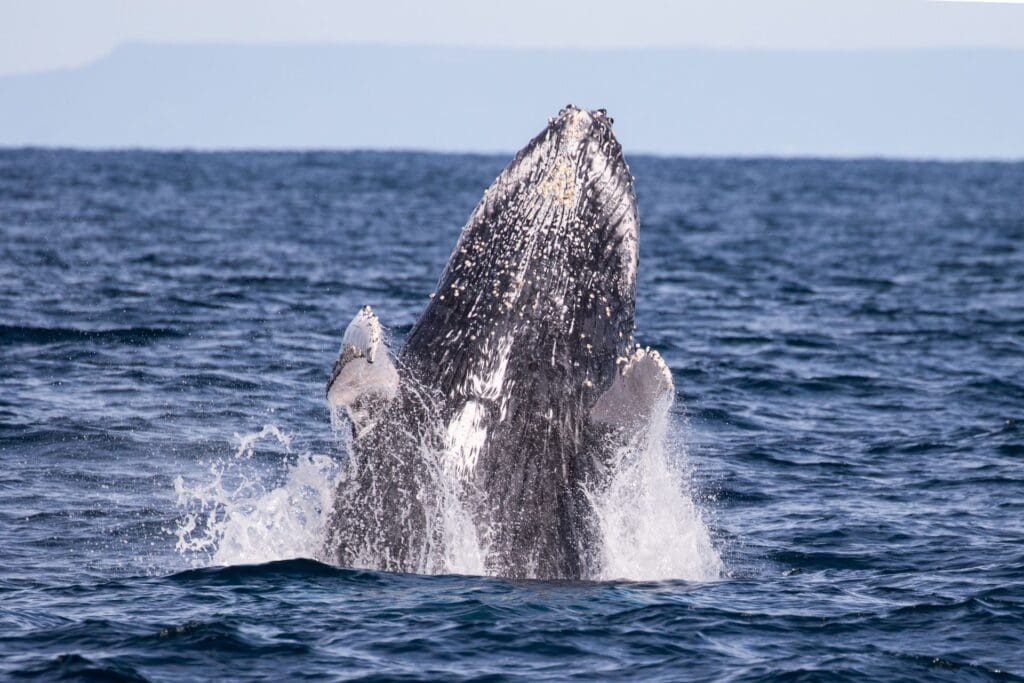

| Location | Region/City | Best Time to See Humpback Whales |
|---|---|---|
| Alaska, USA | Juneau, Glacier Bay | Summer (June – August) |
| Hawaii, USA | Hawaiian Islands | Winter to Spring (December – May) |
| East Coast, USA | Cape Cod, Maine | Summer to Fall (June – November) |
| West Coast, USA | California to Washington | Spring to Winter (April – December) |
| Queensland, Australia | Great Barrier Reef, Hervey Bay | Winter to Spring (July – November) |
| Iceland | General | Summer (June – August) |
| Norway | Tromsø | Winter (November – January) |
| Baja California, Mexico | General | Winter to Spring (December – April) |
| Dominican Republic | Silver Bank, Samaná Bay | Winter to Early Spring (January – March) |
| South Pacific Islands | Tonga, Cook Islands | Winter to Spring (July – October) |
The Humpback’s Song
Now, let’s talk about their singing. Yes, you heard that right – they sing! Humpback whales are famous for their songs. These aren’t just random noises; they’re complex and beautiful, like the songs of birds. Scientists think they sing to communicate with each other and maybe to attract mates. If you’re out on a boat and you’re really quiet, you might even hear these songs through the hull!
Humpback whales’ songs are not just short tunes; they can last for hours, and each part of the song is repeated in a pattern. It’s like they have their own hit singles that change every year. How cool is that?
Rare Sightings: Albino Humpback Whales
Have you ever heard of an albino humpback whale? Albino animals are very unusual because they have white skin and hair due to a lack of pigment. There’s a famous albino humpback named Migaloo who swims in the waters of Australia. He’s like a celebrity in the whale world!
The Majestic Journey of Humpback Whales
Migration Marvels
One of the most amazing things about humpback whales is their incredible journey across the ocean. This journey is called migration. Every year, humpback whales travel thousands of miles, which is like going from one end of a country to the other and back again! They do this to find the best places to eat and to have their babies.
You can witness part of this epic journey in places like Atlantic City. The whales come here during certain times of the year, making it a special spot for whale watchers. Imagine seeing these huge creatures leaping out of the water or swimming peacefully with their young ones. It’s a sight you’ll never forget!
Comparing Giants of the Ocean
Now, let’s talk about how humpback whales compare to other big whales in the ocean, like the blue whale and the sperm whale.
Blue whales are the largest animals on Earth – even bigger than any dinosaur was! Humpback whales are big too, but not as huge as blue whales. Sperm whales, on the other hand, are famous for their deep dives into the ocean.
Each of these whale species has its own unique qualities. Blue whales are known for their immense size, sperm whales for their deep-sea adventures, and humpback whales for their acrobatic skills and beautiful songs. It’s like each type of whale has its own superpower!
Humpback Whales and Human Interaction
Close Encounters with Humpback Whales
Have you ever wondered what being up close to a humpback whale is like? Sometimes, these friendly giants get curious and come near boats, giving whale watchers a once-in-a-lifetime experience. But it’s not just about getting a cool photo or an exciting story. These close encounters remind us how important it is to respect these massive creatures and their home in the ocean.
There have been rare, surprising moments, like when a humpback whale accidentally swallows two kayakers or comes really close to a boat. These stories might sound scary, but they’re actually quite rare and usually end safely. They show us that while humpback whales are gentle, we must always be careful and respectful when we’re in their natural habitat.
The Importance of Whale Watching
Whale watching, especially in places like Atlantic City, isn’t just fun; it’s also a way to learn about and appreciate these amazing animals. When people see humpback whales in their natural environment, they often become more interested in protecting them and the ocean. It’s a win-win: we get to enjoy the beauty of these whales, and our interest in them helps support their protection.
But remember, responsible whale watching is key. This means keeping a safe distance and not disturbing the whales. Following these rules ensures that both people and whales can have the best experience possible.
Humpback Whales in Art and Culture
Capturing Their Beauty
Humpback whales don’t just swim in the ocean; they also make a big splash in art and culture! People are so amazed by these giant creatures that they create beautiful drawings and paintings of them. Imagine trying to capture the size and grace of a humpback whale on a piece of paper or canvas. It’s a way for artists to share the beauty of these whales with others who might not have seen them in real life.
And it’s not just professional artists who are inspired. Many kids and adults enjoy drawing humpback whales, too. You might have seen some cool humpback whale drawings in books, on websites, or even as part of school projects. These drawings help us appreciate the whales’ beauty and learn more about them.
Whales in Toys and Literature
Humpback whales have also made their way into our toys and stories. Have you ever seen a stuffed humpback whale toy? They’re cuddly and cute – a big contrast to how huge these animals are in real life! These toys can be a fun way to remember a whale-watching trip or to spark interest in marine life.
In books and stories, humpback whales often play exciting roles. They can be wise, friendly giants of the sea or mysterious creatures that lead characters on amazing adventures. Reading about humpback whales can be as fun as watching them, especially when the stories are full of imagination and wonder.
Conservation Efforts
- International Whaling Commission (IWC): The IWC regulates whaling activities and promotes whale conservation. [1]
- Marine Protected Areas (MPAs): Establishing MPAs helps protect crucial whale feeding and breeding grounds. [2]
- Species-Specific Conservation Programs: Programs targeting specific species or populations are critical, especially for at-risk populations.
- Research and Monitoring: Ongoing research is essential for understanding whale populations and the impacts of various threats. This information is crucial for effective conservation strategies.
- Public Awareness and Education: Educating the public about whales and their threats is vital for garnering support for conservation efforts.
- Collaboration with Fisheries: Working with the fishing industry to develop whale-safe fishing gear and practices can significantly reduce entanglement deaths.

